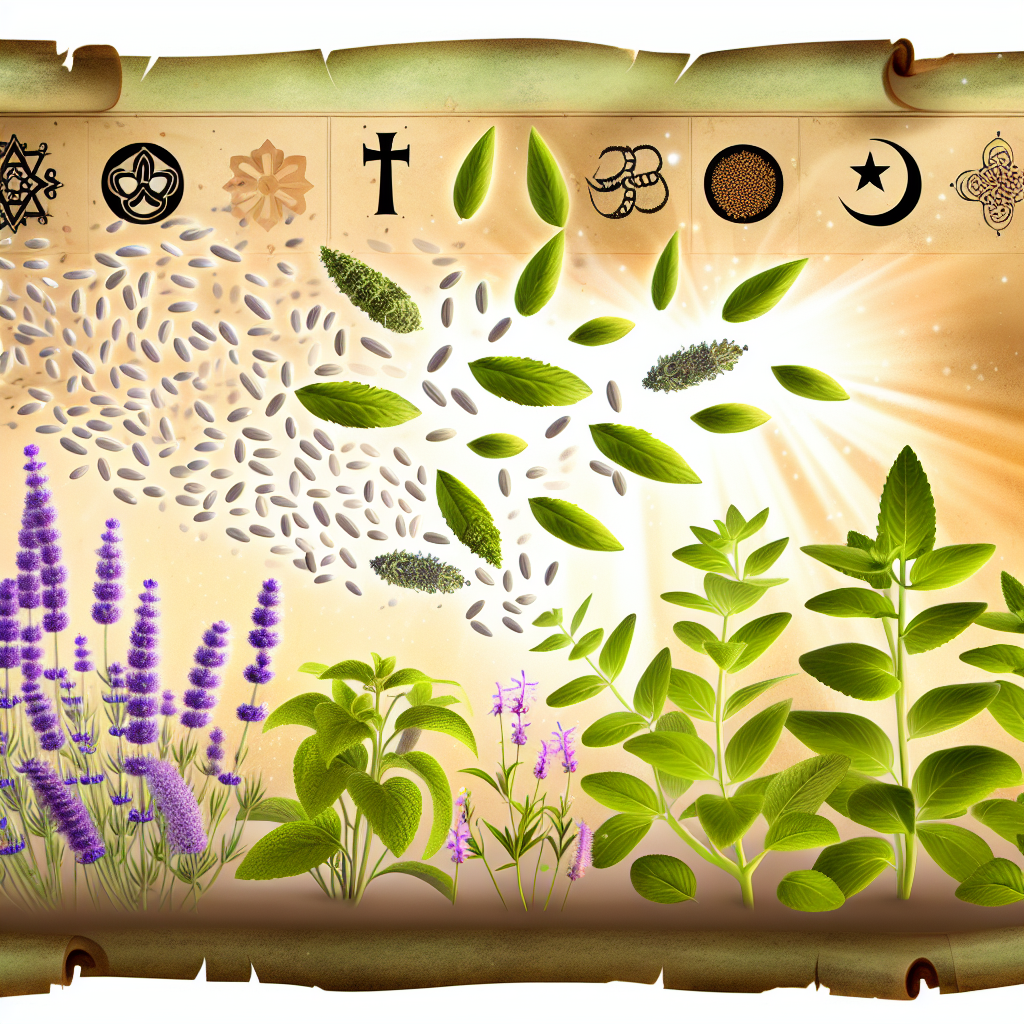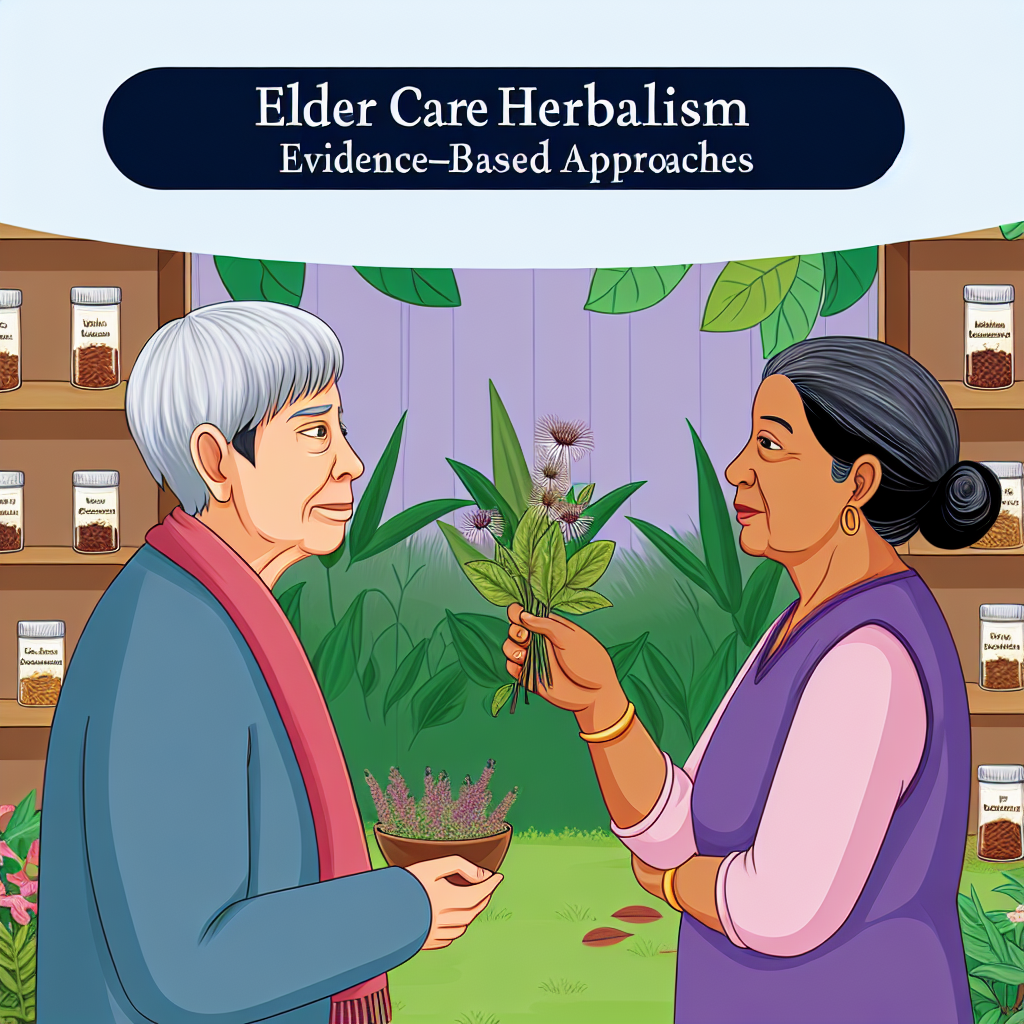Sacred Seeds: Religious Plant Traditions with Confirmed Therapeutic Properties
Discover how ancient sacred plants revered for spiritual rituals are now revealing proven benefits for the mind and body through modern science.
Bridging Spirit and Science: The Sacred Roots of Healing
Throughout history, humans have turned to nature not only for sustenance but also for spiritual connection and healing. In many religious and cultural traditions across the globe, plants have held a significant, even sacred role — revered not only for their symbolic meanings but also for their potent medicinal properties. From the basil leaves used in Hindu worship, and frankincense burned in Christian ceremonies, to the sacred cacao imbibed during ancient Mayan rituals, sacred plants have served as a bridge between body, mind, and spirit.
Today, in an era of renewed interest in holistic health and natural remedies, there is increasing scientific inquiry into these sacred botanicals. Many of these plants, traditionally regarded as divine gifts and used in religious ceremonies, have shown measurable therapeutic benefits in modern clinical settings. This convergence of faith-based wisdom and scientific validation underscores a larger truth: ancient spiritual traditions often harbored a deep-rooted understanding of medicinal botany.
Sacred Plants Across Cultures: From Ritual to Remedy
The sacred use of plants is not relegated to a specific region or religion. In Ayurveda, India’s ancient system of medicine, holy basil (Tulsi) is not just spiritually revered but also clinically valued for its adaptogenic and immune-boosting properties. In Christianity, myrrh and frankincense, gifts to the infant Jesus, have been shown to possess antimicrobial and anti-inflammatory benefits. In traditional Chinese medicine, ginseng — long considered a divine root — is used to restore energy and vitality, and current biochemical analyses support its effectiveness in boosting mental function and reducing fatigue.
Even cultures of the Americas have their sacred flora. The use of cacao by Mesoamerican civilizations was not simply a celebratory beverage but a sacrament valued for its cardiovascular and mood-enhancing properties. Indigenous North American tribes continue to use sage in smudging ceremonies, a practice that recent findings suggest may purify air by reducing bacterial count.
The spiritual sanctity and medicinal efficacy of these plants reveal an intrinsic link between wellness and reverence. As more researchers delve into the traditional usage of these sacred seeds and herbs, the true therapeutic potential of these time-honored remedies is increasingly supporting what ancient peoples already knew: nature’s pharmacy is both sacred and scientifically powerful.
Proven by Science: Sacred Plants with Validated Healing Benefits
Multiple modern studies support what traditional systems of healing have long asserted: that sacred plants possess legitimate therapeutic properties.
1. Holy Basil (Tulsi): The Divine Adaptogen
Tulsi is one of the most revered herbs in Ayurveda and is often planted around temples and homes in India. Beyond its religious significance, Holy Basil is known for its multifaceted healing properties. According to a review published in the Journal of Ayurveda and Integrative Medicine, Tulsi has been found to mitigate psychological stress, enhance metabolic function, and possess potent antimicrobial activity (Prakash & Gupta, 2005). The study underscores Tulsi’s adaptogenic potential, making it effective in countering stress-related ailments and promoting overall resilience and vitality.
2. Frankincense & Myrrh: Gifts of the Wise, Remedies for Today
Used in Christian liturgical practices, particularly within Eastern Orthodox and Catholic traditions, frankincense and myrrh have been used for centuries in religious rites. Their medicinal value is now supported by science. A study published in Phytotherapy Research highlights the anti-inflammatory properties of Boswellia serrata (frankincense), particularly in treating osteoarthritis and inflammatory bowel disease (Siddiqui, 2011). Myrrh, too, has demonstrated antiseptic and analgesic properties, and some laboratory studies even suggest its potential to support anticancer activities.
3. Ginseng: The Sacred Root of Vitality
Held sacred in East Asian cultures, Panax ginseng has a long history in Chinese spiritual and medical traditions. Research published in the Journal of Ginseng Research affirms its adaptogenic properties, showing benefits in improving cognitive performance, boosting immune function, and reducing fatigue (Reay et al., 2005). The root’s therapeutic actions are linked to ginsenosides, active compounds known to influence neuroprotective and immunomodulatory processes.
4. Sage: Smudging with Science
Used ceremonially by Native American tribes for spiritual cleansing, sage has practical benefits supported by scientific evidence. A study in the Journal of Ethnopharmacology found that burning sage (smudging) can clear airborne bacteria, reducing the airborne bacterial count by 94% in enclosed spaces (Nautiyal et al., 2007). Additionally, various species of sage have shown promise in cognitive enhancement and anxiety reduction, making it a suitable natural treatment for neurodegenerative diseases.
5. Cacao: Chocolate with a Sacred Heart
Once consumed in ritualistic contexts as a sacred drink by the Maya and Aztecs, cacao is celebrated today not only for its flavor but for its therapeutic benefits. Rich in flavonoids, cacao enhances cardiovascular health by improving blood flow and reducing blood pressure. A study in the British Journal of Clinical Pharmacology reports cacao’s positive effects on endothelial function and its potential to decrease the risk of heart disease (Tomas-Barberan et al., 2014). Furthermore, cacao stimulates the production of feel-good neurotransmitters like serotonin and dopamine, which explains its reputation as a natural mood enhancer.
Embracing Holistic Wellness Through Sacred Wisdom
Through centuries of anecdotal evidence and now supported by robust clinical research, sacred plants have cemented their role as both spiritual and medicinal tools. Their dual-purpose nature — as divine symbols and disease modulators — makes them unique and especially relevant in today’s shift toward integrative and holistic medicine.
A Holistic Path Forward: Medicine Rooted in the Sacred
The reverence for sacred plants spans time, geography, and theology — a testament to their profound impact on human civilizations. From the altar to the apothecary, these sacred seeds and herbs carry more than symbolic meaning. They offer real, measurable health benefits that continue to be validated by modern science. As we grow increasingly conscious of the need for holistic and sustainable health practices, turning back to the traditions that honored nature as both sacred and medicinal offers timeless wisdom.
Healing doesn’t always come from a pill bottle. Sometimes, it comes from the leaves of a plant blessed by centuries of prayer and protected by generations of belief. By embracing both spiritual heritage and scientific investigation, we can continue to unlock the full healing potential of these sacred botanical gifts.
## References
- Prakash P, & Gupta N. (2005). Therapeutic uses of Ocimum sanctum Linn (Tulsi) with a note on eugenol and its pharmacological actions: A short review. Journal of Ayurveda and Integrative Medicine. Read Study
- Siddiqui MZ. (2011). Boswellia serrata, a potential antiinflammatory agent: An overview. Phytotherapy Research. Read Study
- Reay JL, Kennedy DO, Scholey AB. (2005). Effects of Panax ginseng on physical performance and mental function. Journal of Ginseng Research. Read Study
- Nautiyal CS, et al. (2007). Medicinal smoke reduces airborne bacteria. Journal of Ethnopharmacology. Read Study
- Tomas-Barberan FA, et al. (2014). Flavonoids and cardiovascular health: A review. British Journal of Clinical Pharmacology. Read Study
Concise Summary:
This article explores the intersection of ancient sacred plant traditions and modern scientific research, highlighting how plants revered for spiritual rituals are now revealing proven therapeutic benefits for the mind and body. It delves into the medicinal properties of sacred plants across various cultures, including holy basil, frankincense, myrrh, ginseng, sage, and cacao, and how their traditional uses are being validated by contemporary studies. The article underscores the growing recognition of the intrinsic link between wellness, reverence, and the healing power of nature’s botanical gifts.

Dominic E. is a passionate filmmaker navigating the exciting intersection of art and science. By day, he delves into the complexities of the human body as a full-time medical writer, meticulously translating intricate medical concepts into accessible and engaging narratives. By night, he explores the boundless realm of cinematic storytelling, crafting narratives that evoke emotion and challenge perspectives.
Film Student and Full-time Medical Writer for ContentVendor.com




